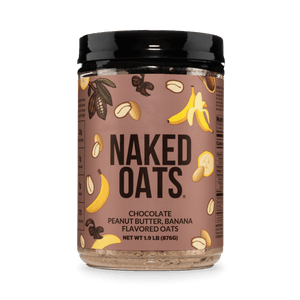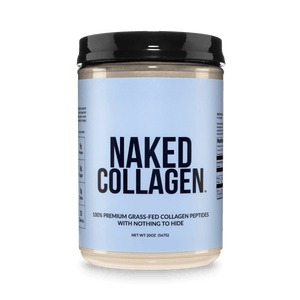The muscle gains from creatine can be both temporary or for the long term, depending on a variety of factors like consistency with training and nutrition over time. But the initial gain in weight during the first couple weeks of creatine supplementation are usually temporary.
Let’s dive in with more details.
Key Takeaways
- Taking creatine alone is not guaranteed to increase muscle mass however, with the proper training regimen and diet, its benefits can be maximized.
- Once you stop taking creatine supplements your creatine stores will return to their normal levels and If you don’t keep up with a consistent training routine and diet regimen then you will likely lose your muscle gains over time.
- Studies suggest creatine may be most effective when taken right before or right after training.
- It will take time for your body to reach peak levels of creatine in the muscle tissue with supplements, which can take anywhere from 1 to 4 weeks unless you complete a loading phase.
- There are a few different forms of creatine on the market however, creatine monohydrate is among the most common and well-researched.
Does Creatine Make You Gain Weight?
Those new to creatine may have shied away from it in the past due to the common misconception that it can result in weight gain.
While taking creatine can cause some fluctuations on the scale, these are typically a result of one of two things: water and muscle.
An increase in fluid retention is possible while taking creatine supplements and is most common during the loading phase.
This is a popular practice for those new to creatine where high doses are consumed for 5-7 days to rapidly boost creatine stores in the muscle tissue.
Creatine draws water into the muscle tissue, which can cause it to appear swollen. This is why some may complain of weight gain or bloating while taking creatine, which can add between 2-5 pounds on the scale.
However, this typically resolves on its own following the loading phase but some minor retention will remain throughout taking this supplement [1].
Additionally, creatine can help to boost muscle strength and performance. This can result in positive gains in muscle mass. While it can be concerning to see the scales tipping upward, muscle is more dense than fat [2].
A gain in muscle mass will show as an increase in weight but these are the increases we want to see. If you find yourself stressing about the number on the scale, consider other ways to measure your progress, such as body measurements.
These will more accurately reflect changes in body composition compared to a scale.

Does Creatine Help Increase Muscle Mass?
Taking creatine alone is not guaranteed to increase muscle mass however, with the proper training regimen and diet, its benefits can be maximized.
Several studies have demonstrated the benefits of creatine supplementation in various areas of athletic performance including improving endurance levels and boosting energy and recovery.
Taking creatine supplements can help to boost your body's phosphocreatine stores in the muscle tissue which is essential to produce adenosine triphosphate (ATP).
This is your body’s main source of energy for muscle contraction [3].
Higher levels of ATP production in the muscle tissue means more reps or higher weight without getting fatigued. When you can do more, you get more out of your workouts which can help to fuel muscle growth [4].
With that said, this works best with proper and consistent resistance training along with a diet that contains adequate protein to fuel muscle gain.
However, some studies have found that creatine supplements can boost muscle growth in both sedentary and active adults and may be one of the most effective supplements for increasing lean body mass [5, 6].
Does Creatine Make You Bloated?

Because creatine brings water into the muscle tissue with it, it’s normal to experience some minor bloating while taking these supplements. This bloating is typically most noticeable during a loading phase.
Because of the large volume of creatine inundating the muscle during a short period, a large dose of water comes with it. This can give the muscle tissue the appearance of being swollen or puffy.
Research has found many may experience an average gain of 1-2% of their body weight during this time. Most can be attributed to water while the remaining is new muscle [7, 8].
If you are concerned about creatine bloating, you can skip the loading phase altogether.
Are Creatine Muscle Gains Permanent?
While creatine gains a gold star for aiding in muscle growth for a large variety of population groups, the answer remains; is it permanent?
Once you stop taking creatine supplements your creatine stores will return to their normal levels. If you don’t keep up with a consistent training routine and diet regimen to support your muscle gains then you will likely lose them over time.
However, most of your losses once discontinuing creatine supplements will be water weight. Your body will drop the excess water that it was storing with creatine which may show on the scale as a minor drop in weight [9].
There may be some losses in muscle mass as well but these will likely be insignificant unless other parts of your training or diet regimen have ceased as well.

What is the Best Time to Take Creatine?
There has not been any established recommendation for the optimal timing to take creatine supplements.
However, many studies suggest creatine may be most effective when taken right before or right after training compared to long before or after.
The timing on rest days appears to be less important than on exercise days [10].
How Long Does it Take for Creatine to Work?
Many wonder how long before they notice a difference when taking creatine however, this depends on your creatine stores before supplementation.
It will take time for your body to reach peak levels of creatine in the muscle tissue with supplements, which can take anywhere from 2 to 4 weeks [11].
Many opt to do creatine loading in an attempt to rapidly increase creatine stores and see results faster. A loading phase for creatine is a common practice but not required.
This is when larger doses of creatine are taken, about 20-25 grams, for about 5-7 days to help saturate your muscles with creatine to boost overall stores.
Following the loading phase, you will continue with a maintenance dose of 3-5 grams per day [7].
Research has found creatine loading may help boost creatine stores anywhere from 10 to 40%. This can allow for results quicker than in those not participating in a loading phase, within 5-7 days versus 1 to 4 weeks.
Do I Need to Cycle Creatine?

Creatine cycling is a method used to help boost the benefits of creatine and involves alternating between a loading phase, a maintenance phase, and a rest phase, typically over two months.
This is because research has found the beneficial effects of creatine supplements may begin to drop off around this time. Taking a 2-4 week rest period can help to boost effectiveness.
While creatine cycling is not a requirement, it can help to optimize the benefits of your creatine supplement.
What is the Best Type of Creatine for Muscle Gain?
There are a few different forms of creatine on the market however, creatine monohydrate is among the most common and well-researched.
This means all of the studies available that support the beneficial effects of creatine on exercise performance and muscle growth were done using creatine monohydrate.
Because of this, it is the most recommended form of creatine for supplementation.

TL;DR
Creatine is one of the most popular athletic supplements on the market. While it can provide some impressive muscle-boosting benefits, your body’s creatine stores will return back to normal levels once you stop taking creatine supplements.
While this doesn’t mean you will lose all the muscle mass you gained, you must be mindful to keep up with a training and diet regimen that continues to encourage muscle growth to avoid losses.
If you’re new to creatine and looking for ways to boost its effects, you can try creatine loading and cycling.
Both of these methods involve taking a larger dose of creatine for 5-7 days followed by a maintenance phase of 3-5 grams per day. Creatine cycling involves taking an additional 2-4 week rest period after 2 months of creatine supplementation to avoid a plateau in its effects.
Be sure to take creatine shortly before or after exercise to get the most out of your supplement and don’t worry if you see a small bump in the scale. It’s common for those taking creatine to experience some water retention but this will resolve once you stop taking creatine.














